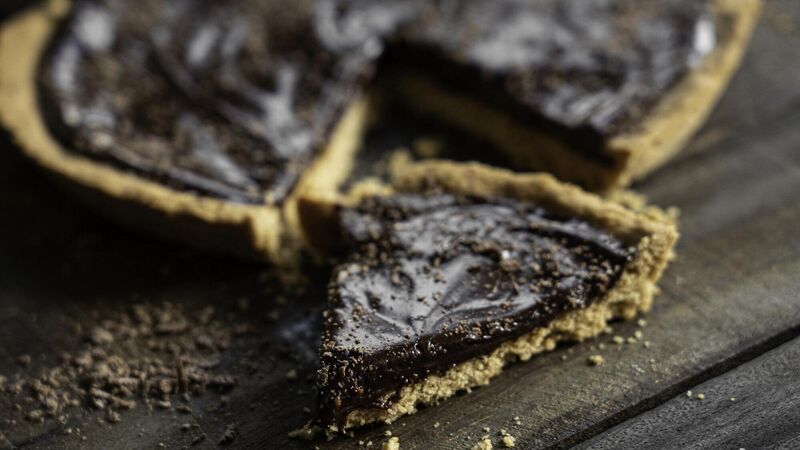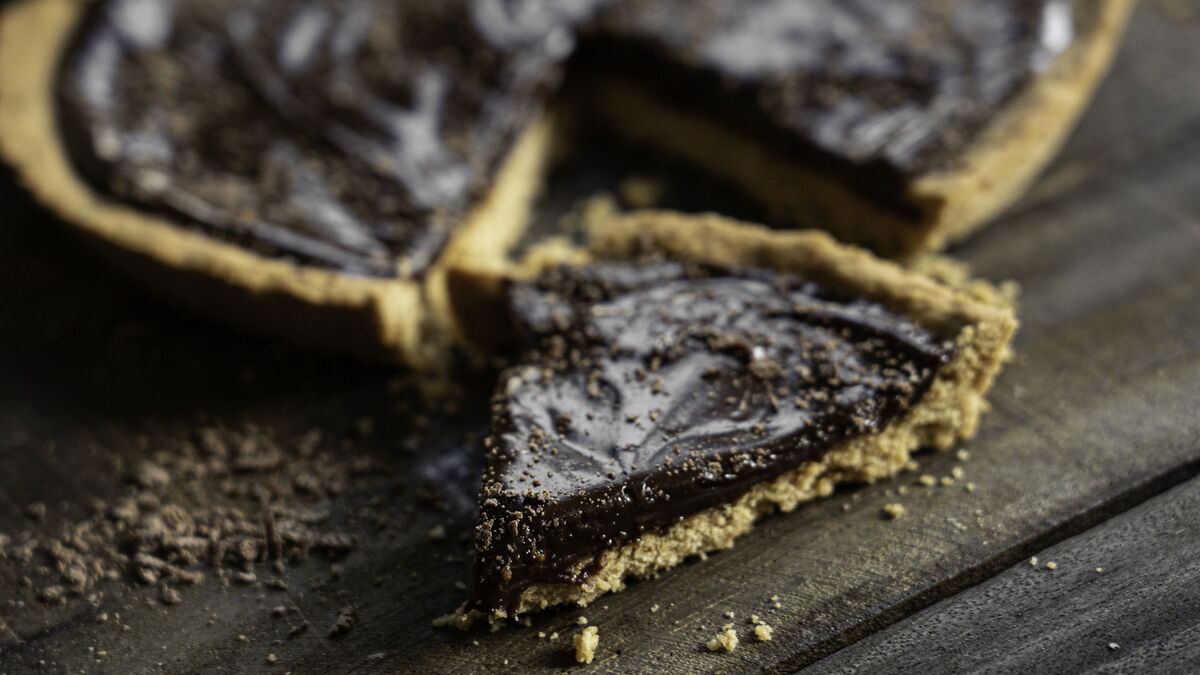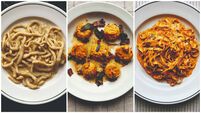Michelle Darmody: How to bake sweet short-crust pastry — and the mistakes to avoid

Pic: iStock
There is an old saying when someone shakes your hand, and it feels cold, they say that you would make a good baker. There is a reason for this.
The key to good pastry is to keep it cold. If you naturally have warm hands, you can run them under a cold tap for a couple of seconds, pat them dry, and then get making your pastry.
To keep things cold, it is also worth putting the pastry back into the fridge as often as you can before baking it, after it has been first made, or when it has been rolled out, or any other time it has been handled.
Knowing how to make a good pastry opens up a lot of delicious possibilities! The same pastry can be used for all sorts of tarts and pies, big and small.
You can bake a pastry case blind and then fill it with many different toppings, like lemon curd, fresh strawberries and whipped cream or chocolate ganache.
Baking blind means covering the raw pastry case with baking beans or something else that will press the pastry down as it bakes.
Pricking the pastry with a fork helps but that is not usually enough on its own to stop it rising up and bubbling.
You can use this pastry for a closed tart like an apple tart or for small mince pies or individual jam tarts, but I'm going for a classic chocolate tart this week.
Sweet Shortcrust Pastry
You can use this pastry for a closed tart like an apple tart or for small mince pies or individual jam tarts

Servings
10Preparation Time
30 minsCooking Time
15 minsTotal Time
45 minsCourse
BakingIngredients
225g plain flour, sieved
a pinch fine sea salt
140g cold butter, cubed
60g golden caster sugar
1 egg, lightly beaten
For the glaze:
1 egg, beaten
For the filling:
280ml cream
400g dark chocolate, broken
into small even size pieces
70g butter
Method
Add the salt to the sieved flour and stir them together in a large bowl. Add the small cubes of butter and rub them into the flour until it looks like rough breadcrumbs.
Stir the sugar into the beaten egg to dissolve it slightly and add this to the flour mixture until it comes together as a dough.
Wrap the pastry dough in baking parchment and place into the fridge to firm up for about two hours.
Heat the oven to 180˚C/ gas mark 4. Grease and flour a loose base tart tin. I use one that is 11 in. You can use the paper from the block of butter to grease the tin or tear a square of baking parchment and rub a teaspoon of butter onto this. If it is a fluted tart tin, make sure you get into all the crevices. Add a teaspoon of flour into the greased tin and swirl it around so that all of the butter is covered in flour. You can line the base of the tin with parchment as well if you would prefer, to ensure it lifts out easily. Set the prepared tart tin aside in a cool or cold place while you roll your pastry.
Roll the pastry into a disc a few centimetres larger than your tart tin and gently nudge it into the tin. Do not stretch the pastry. Prick the base all over with a fork. Put a disc of parchment paper into the tart case and fill this with baking beans or some clean coins. I find metal coins work well as they heat at the same rate as a metal tart tin which ensures that the pastry bakes evenly. The coins not only conduct heat for a good crust, but the weight of them is also good for preventing the dough from bubbling.
Bake the tart case blind for 12 minutes until the edges are just starting to colour. Remove the beans, coins, or whatever you used to blind bake. Be careful when removing coins, because they will be very hot.
Brush the inside of the pastry case with the beaten egg. Place the case back into the oven for another five minutes or until it is golden. Allow to cool completely in the tin.
To make the filling, heat the cream until it is shivering. Just before it boils, remove it from the heat then add the chocolate and butter and stir until glossy.
Allow to firm up for about five minutes then pour it into your cold tart case.
Serve as soon as it the topping cools and firms up.
- Butter and oil have different consistencies and when you are making pastry you do not want to lose the firm consistency of the butter. If you handle your butter too much and allow it to melt into an oil, the pastry will never be crisp, it will be floppy and gummy in texture. To keep the butter in its solid form, cut it into very small cubes before adding it to the flour, then quickly rub the flour and butter together in the palms of your hands. The texture should look like rough breadcrumbs and not be greasy.
- I find it best to use a metal tart tin rather than a silicone one. It will help the pastry get cooler in the fridge before baking and it heats hotter and more evenly to make a crisp base.
- It is best not to pull and stretch the pastry to fit your tin because it will shrink back when it is baking. Instead roll it bigger than you need for your tart case and then very gently nudge it into place. Do not wedge the pastry into the tin, just allow it to fit in gently.
- You can allow a little pastry to overhang around the edges of the tin and then cut this back when the pastry case is just out of the oven and the pastry is still mailable.
- It is advisable not to add too much flour to the work surface when you are rolling the pastry. It is tempting to coat the surface with a generous dusting of flour but adding too much can cause the pastry to dry out. Instead, if you are having trouble rolling use the rolling-pin very gently. I nudge the pastry with the rolling-pin rather than pushing down on it and pressing the pastry too hard.
- Mixing the sugar and eggs helps the sugar to dissolve so it blends into the pastry quicker.
- If you are filling your tart case with a topping that needs a little more baking, such as a lemon tart, the tart case should be a light biscuity colour when it comes out of the oven. If the blind baking is the final bake in the recipe, as with the chocolate tart included here for example, you can leave it in the oven for an extra minute or two until it is slightly golden.
- Adding a glaze to a blind baked pastry case stops the topping from seeping in and softening the pastry. It is like a thin layer of varnish on a wooden counter. To add a lovely shine or deeper colour to your pastry base add a glaze before the second bake. This also works for the top of a tart like an apple tart. Egg whites on their own will give you a very shiny finish, beaten eggs or egg yolks will give a deeper colour and milk or cream will give you a matt golden colour.
Adding crushed nuts to the pastry adds a crunch and flavour. Add 30g of crushed hazelnuts into the pastry when you are adding the sugar and egg mixture.
Adding cocoa powder will not only change the flavour it will add a dramatic colour and finish to the pastry base for a tart. Replace 25g of the flour with 25g of cocoa powder. Make sure to sieve the two together to ensure they are well combined.
Adding lime zest to the pastry gives a really nice zesty variation. I particularly like this with the chocolate filling above. The lime and rich soft chocolate work very well together. Add the zest of three medium sized limes when you are adding the sugar and egg mixture.








